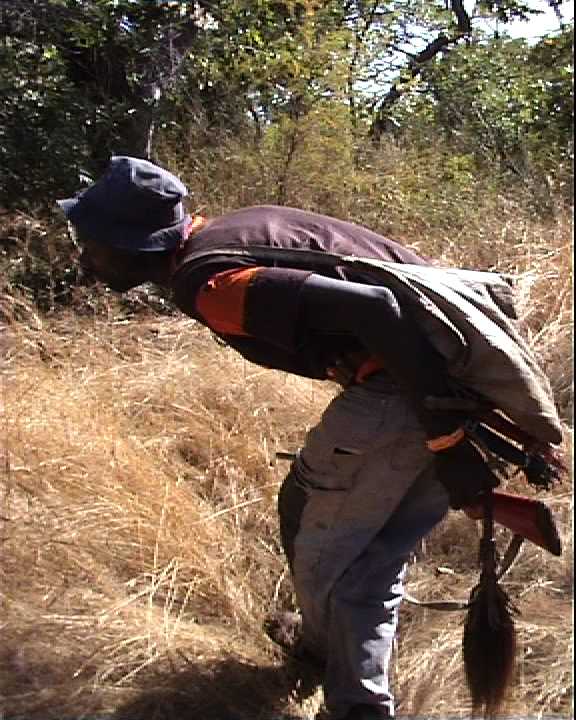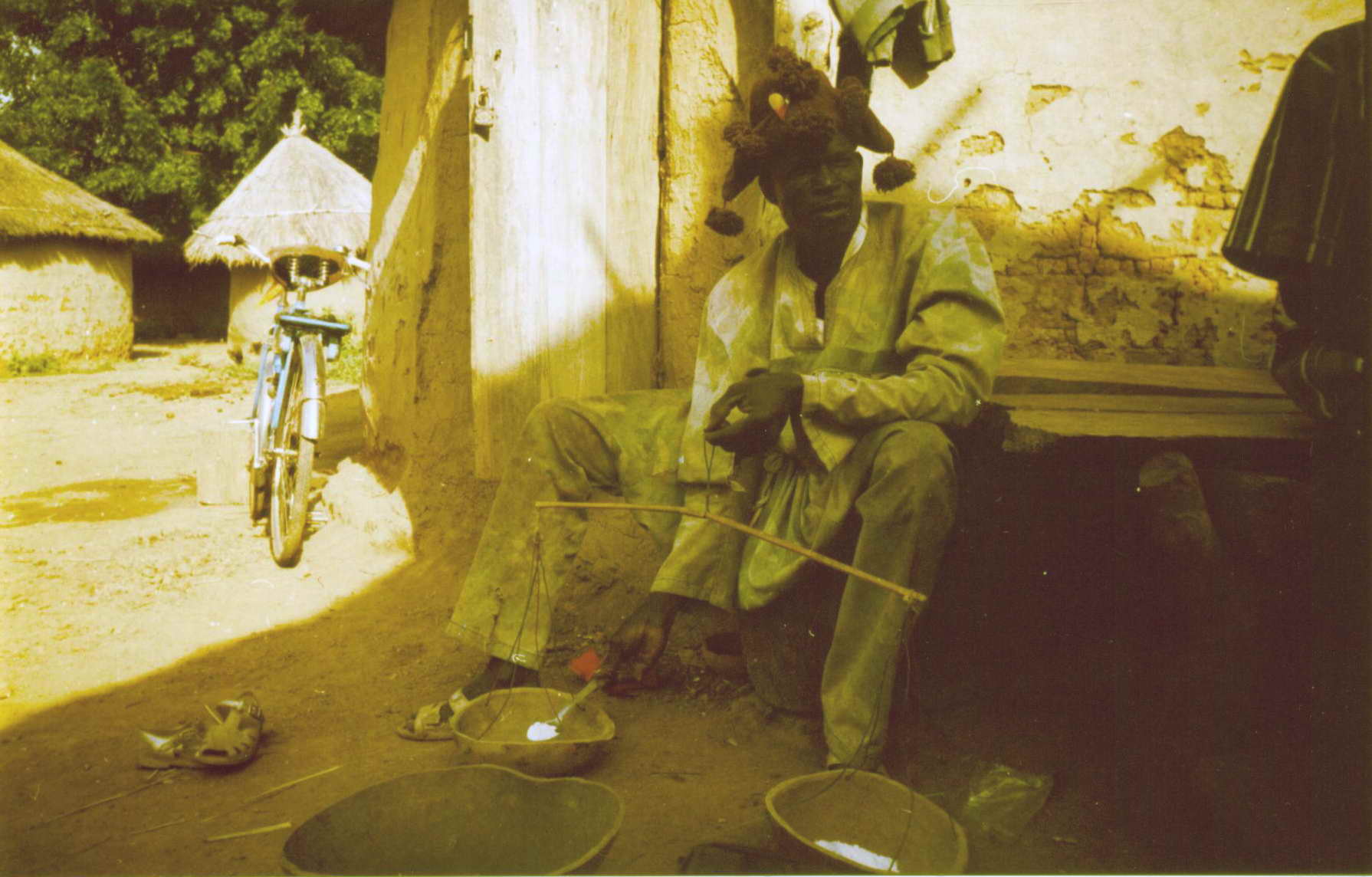
Based on the traditional spectacles of hunter brotherhood Malinké, Mali.
Adaptation: Diakaridia Keita i Agnieszka Kędzierska
Music: Bala Bagayoko
Photos: Agnieszka Kędzierska, Laboratorium Llcan CNRS
Cast: Diakaridia Keita
Mande is one of the most numerous and important ethnic groups in West Africa. Despite the fact that their dances are popular among other African people, they are practically unknown in Europe. Malinké hunters inhabiting south-east Mali have never danced or performed in front of European audience.
 Diakaridia Keita from Sélofara village is a famous and recognized master-hunter from the Naréna region. He has participated in hunter's celebrations and performed as a professional for over twenty years. The Hunting is a performance that reaches back to the ritual traditions of the hunter brotherhood, an esoteric organization whose beginnings go back to the third century B.C. and which contributed to the establishment of the mediaeval Mali kingdom. The way hunters move and dance has inspired the creators and theoreticians of European theater, such as Jerzy Grotowski or Eugenio Barba. For them that archaic form of movement on stage was not only the source of all performances but also a basic and universal way of using human body for unusual purposes. Diakaridia Keita's performance is thus a journey in time as well as in space, an invitation for a trip to a sunny savanna and into the depths of psychophysical techniques long sunk into oblivion.
Diakaridia Keita from Sélofara village is a famous and recognized master-hunter from the Naréna region. He has participated in hunter's celebrations and performed as a professional for over twenty years. The Hunting is a performance that reaches back to the ritual traditions of the hunter brotherhood, an esoteric organization whose beginnings go back to the third century B.C. and which contributed to the establishment of the mediaeval Mali kingdom. The way hunters move and dance has inspired the creators and theoreticians of European theater, such as Jerzy Grotowski or Eugenio Barba. For them that archaic form of movement on stage was not only the source of all performances but also a basic and universal way of using human body for unusual purposes. Diakaridia Keita's performance is thus a journey in time as well as in space, an invitation for a trip to a sunny savanna and into the depths of psychophysical techniques long sunk into oblivion.
 The performance starts with a traditional greeting from the brotherhood elders and is divided into four parts. The introductory phase consists of an imitation of sand reading using kola nuts, incantation directed at hunter's fetish and herbal practices intended to make hunting fruitful. The second part shows hunters sneaking near game and shooting. It ends with ritual annihilation of the animal's vital forces that might try to revenge on the hunter. The third part consists of hunter dances. Diakaridia Keita shows a number of steps that require perfect technique and psychical concentration. The final part is a show of magic tricks. They constitute a traditional element of hunter ceremonies that allow members of the brotherhood to show off their skills and ingenuity as well as proving their magic power.
The performance starts with a traditional greeting from the brotherhood elders and is divided into four parts. The introductory phase consists of an imitation of sand reading using kola nuts, incantation directed at hunter's fetish and herbal practices intended to make hunting fruitful. The second part shows hunters sneaking near game and shooting. It ends with ritual annihilation of the animal's vital forces that might try to revenge on the hunter. The third part consists of hunter dances. Diakaridia Keita shows a number of steps that require perfect technique and psychical concentration. The final part is a show of magic tricks. They constitute a traditional element of hunter ceremonies that allow members of the brotherhood to show off their skills and ingenuity as well as proving their magic power.
The show is accompanied by traditional Malinké hunter music recorded in Sélofara village in Mali during the performance of a hunter-musician Bal Bagayoko. He plays an instrument called sinbi, which is a kind of a lute. The songs are about heroic deeds of great hunters from the past, they describe elements of hunter's attire and accessories, finally they are an ethical message for hunters.
Performances: Saturday, 26 VI 2004, 21.45 (Plac przed Teatrem Dramatycznym), Sunday, 27 VI 2004, 17.30 (Rynek Ko¶ciuszki)
Presentations: Tuesday, 22 VI 2004, 18.00 (Muzeum Podlaskie); Friday, 25 VI 2004, 19.00; Saturday, 26 VI 2004, 11.00 i 18.30; Sunday, 27 VI 2004, 12.00 (Rynek Ko¶ciuszki)